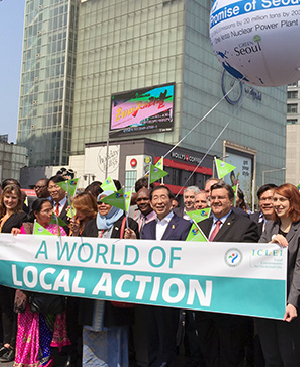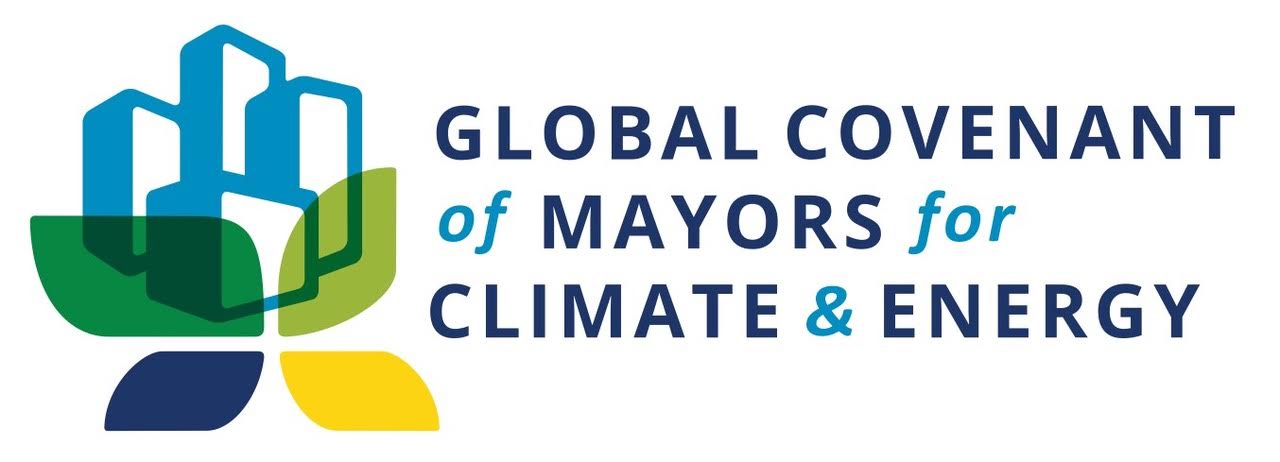- Home
- Reporting entities
- City of Baltimore, MD
City of Baltimore, MD
United States-
Population 622793

-
Area 239.0km 2
-
GDP 150 MillionUSD
-
Targets by N/A N/Aemission
Targets by City of Baltimore, MD
There are no targets yet
- Start year: 2013
- Type: Public Participation/Stakeholder engagement
- Status:
The Baltimore Energy Challenge has started a Cool Roof outreach program to engage residents and businesses in not only learning about the benefit of reflective roof technologies, but also taking action to install cool roofs and reflective roof coatings. This is a three year program, funded at $100,000 per year
Read More Read Less- Residential
- Commercial
- Industrial

- Start year:
- Type: Policy/Strategies/Action Plans
- Status: In operation
Create high-quality pedestrian- and transit-oriented neighborhoods
Read More Read Less- Transport

- Start year:
- Type: Assessment/Research
- Status:
Benchmark and disclose energy performance and improvements of city-owned and privately-owned commercial, industrial, institutional buildings
Read More Read Less- Commercial
- Industrial

- Start year:
- Type: Technical/Infrastructure investment
- Status: In operation
The City requires energy audits for city-owned and privately-owned, commercial, industrial, and institutional buildings over 10,000 sq ft. Also requires retro-commissioning for city-owned and privately-owned, commercial, industrial, and institutional buildings over 10,000 sq ft.
Read More Read Less- Commercial
- Industrial

- Start year: 2012
- Type: Policy/Strategies/Action Plans
- Status: Completed
We are pleased to report that in 2012, Baltimore – the City government, businesses, institutions, community organizations and citizens – made important progress towards our Sustainability Plan goals. The annual report that follows provides specific measurements for and stories about the 29 Plan goals. Among the highlights in this year’s report are the following:
Energy usage across all sectors – City government, schools, and residential was down in 2012. City government reduced its electric kWh usage by over 4% in 2012, and reduced its natural gas usage by over 15%. City schools reduced their natural gas usage by over 27%. Residential electricity usage in the City decreased 13.1% from the 2007 baseline. Savings from these efforts across the City will help work toward achieving our energy reduction goals, as well as our greenhouse gas emission reduction goals. These savings also reflect cost savings for City government, schools and residences – all of which can be used for further energy retrofits or to help stabilize energy costs.
- Residential
- Commercial
- Industrial
- Transport
- Waste
- Start year:
- Type: Technical/Infrastructure investment
- Status:
Encourage co-generation installation for replacing inefficient boiler plants. City government will be doing CHP cogeneration at several facilities in next 5-10 years.
Read More Read Less- Facilities

- Start year: 2009
- Type: Policy/Strategies/Action Plans
- Status:
The Sustainability Plan lays out 29 priority goals within seven theme chapters: Cleanliness, Pollution Prevention, Resource Conservation, Greening, Transportation, Education & Awareness, and Green Economy. Each of the 29 goals is accompanied by a
set of recommended strategies.
- Residential
- Commercial
- Industrial
- Transport

- Start year:
- Type: Technical/Infrastructure investment
- Status: In operation
The City is retrofitting street lights with LED bulbs to increase energy efficiency.
Read More Read Less- Facilities

- Start year:
- Type: Regulatory
- Status: In operation
ADopt green building standards for new residential construction and major renovation
Read More Read Less- Residential

- Start year: 2012
- Type: Policy/Strategies/Action Plans
- Status: Completed
The CAP represents our commitment
to being a leader in sustainability, and improving the environment of our City. The CAP contains feasible measures to help our City reduce our greenhouse gas emissions and curb the effects of climate change on our city.
- Residential
- Commercial
- Industrial
- Transport
- Waste

- Start year:
- Type: Assessment/Research
- Status: In operation
Implement a centralized fueling program and route optimization software
Read More Read Less- Transport

- Start year: 2013
- Type: Public Participation/Stakeholder engagement
- Status:
Over the next three years, the City's weatherization assistance program will be econducting furnace conversions from oil to natural gas.
This is a specific action in the Climate Action Plan.
Funding has been secured for three years and the program will start in 2013. The program will be converting hopefully 300 furnaces per year.
- Residential

- Start year: 2009
- Type: Public Participation/Stakeholder engagement
- Status: In operation
We have recruited and trained over 300 Energy Captains, who in turn have helped us to recruit over 5000 program participants. We built a program website, available at www.baltimoreenergychallenge.org and designed and printed program literature, including lawn signs for participating households. We have distributed over 7000 pledge kits for our volunteers to give to participants. BEC neighborhood organizations have utilized a variety of outreach tactics and hosted a wide range of energy efficiency events around the city. Some examples include door-to-door canvassing, house meetings, volunteers speaking a community meetings, large scale community-wide events focused on energy efficiency, presentations at annual meetings, a presence at neighborhood resource fairs, articles in neighborhood newsletters, etc.
Based on the number of participants, the number of people who have received our materials, the number of event attendees, and the phone calls we receive, we are confident that we have reached a broad range of target neighborhood residents with relevant energy efficiency information, and that residents are continuing to communicate this information with their neighbors.
- Residential
- Commercial

- Start year: 2013
- Type: Policy/Strategies/Action Plans
- Status:
Recognizing the City’s current vulnerability to the
impacts of severe hazard events, Baltimore has
undertaken a thorough, forward-thinking approach
to the hazard mitigation planning process. Baltimore’s
Disaster Preparedness and Planning Project (DP3) was
created by the Department of Planning as an effort to address existing hazards while simultaneously preparing for predicted hazards due to climate change. This project develops a program that integrates hazards mitigation planning, floodplain
mapping, and climate adaptation planning. DP3
links research, outreach, and actions to create a
comprehensive and new risk-preparedness system for addressing existing and future impacts.
Integrating hazard mitigation planning, which
focuses on past events, with climate adaptation
planning, which focuses on what will likely happen
in the future, offers an innovative solution for
Baltimore City. Completing a detailed inventory of natural hazards, a risk assessment, and a vulnerability analysis, informs actions to mitigate hazards and
adapt to predicted climate impacts. This provides
clear guidance and a unified strategy that supports Baltimore’s sustainability and resilience.
In 2000, the President signed into law the Disaster Mitigation Act of 2000 (DMA 2000) in order to reduce the damages associated with natural hazards. The Federal Emergency Management Agency (FEMA) requires that every local jurisdiction in the United States develop and adopt an All Hazards Mitigation Plan (AHMP) as a condition to be eligible for disaster related assistance. While FEMA requires that local
governments update their AHMPs every five years,
this plan is much more than a routine update.
Hazard mitigation can be described as the process
of developing strategies that will reduce or eliminate loss of life and/or property damage resulting from natural hazard events. Baltimore’s hazard mitigation planning process identifies the various hazards
which the City faces, either currently or potentially, and assesses the potential risks and vulnerabilities
associated with those hazards.
Both human and natural activities are causing
the Earth’s atmosphere to experience changing
conditions. Because of climate change, many of the natural hazards now facing Baltimore may become even more dangerous, while new hazards could at the
same time begin to present themselves. Regardless of how quickly or stringently cities are able to reduce
greenhouse gas (GHG) emissions, impacts related to climate change will continue to be felt now and into the future. In the past, societies have generally
been able to adapt to weather extremes and climate variability. Climate change, however, continues to produce new conditions which are beyond the scope of previous experiences. As a result, historical records are quickly becoming inadequate models for future planning and risk preparedness.
- Human health
- Start year: 2010
- Type: Public Participation/Stakeholder engagement
- Status:
TreeBaltimore serves as the umbrella organization for all City agencies and private organizations in their effort to increase the tree canopy of Baltimore.
Through additional funding, the Baltimore Forestry Division and Tree Baltimore will be utilizing $400,000 a year for three years, starting in 2013, to increase tree plantings in high urban heat island areas of the City.
The City of Baltimore, MD has reported 2 Community emission inventories, since 2007. In its latest inventory, compiled in 2010, the Stationary energy, Transport and Waste management are identified as key emission sources.
The City of Baltimore, MD has reported 1 government operational inventory, since 2007. In its latest inventory, compiled in 2007, the Transport and Waste management are identified as key emission sources.


